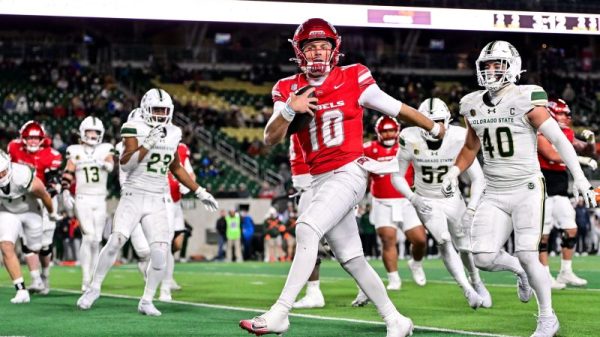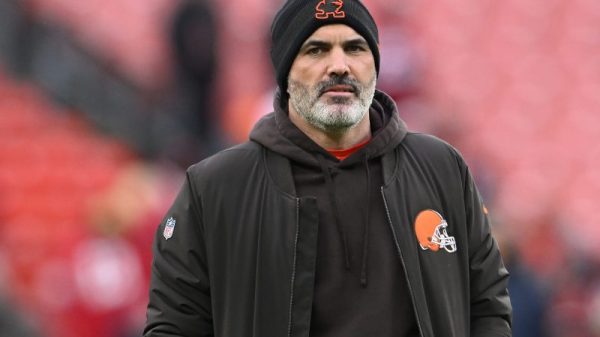Rep. Jim Jordan (R-Ohio), chairman of the House Judiciary Committee, is going to Manhattan on Monday to lead a hearing that will focus on crime in New York. Manhattan District Attorney Alvin Bragg has drawn the ire of Jordan, a fierce defender of former president Donald Trump, for indicting Trump on felony charges related to his role in hush money payments to an adult-film star and a Playboy model.
The hearing is intended to focus on “an increase in violent crime” in the city, the committee has said, with the implication that Bragg, a Democrat, should do more to focus on problems that affect New Yorkers’ lives rather than waste money prosecuting a former president. A bodega clerk, the mother of a murder victim and an anti-crime activist running a “fire Alvin Bragg” campaign are scheduled to testify.
Crime in New York has increased since 2020 — though it remains far below 1980s levels — and city statistics show that of the seven severe categories of crime, five are down relative to this point in 2022.
New York is a big city — Manhattan alone has 1.6 million people — and horrific crimes can happen there. A 21-year-old suspect, out on bail, was arrested Tuesday on charges of killing two people in Harlem within 30 hours. But because New York is such a large city, crime numbers can be taken out of context. The best way to assess the incidence of crime is to adjust the numbers to take into account the size of the population.
Jordan represents a rural district in Ohio, and its biggest city is Mansfield, located midway between Columbus and Cleveland. The population there is below 50,000. But when crime numbers are adjusted for population, in many cases Mansfield does not fare well in comparison to Manhattan. That could be one reason, according to the sister city website, it has the nickname “Danger City” in addition to its official nickname of “The Fun Center of Ohio.”
We sought comment from Russell Dye, spokesman for the committee. We did not get an answer, but the committee’s Twitter account tweeted an image of our email. The Fact Checker “thinks crime is higher in rural Mansfield, Ohio than crime-ridden New York City,” the tweet said. “It’s not. But don’t let the facts get in the way of The Washington Post’s ‘fact-checker.’” In a Twitter thread, the committee included links that suggested our inquiry was misplaced.
But we had been looking at those same websites — and they undercut the committee’s assertion.
There are websites, often designed to help potential home buyers or homeowners, that aggregate different crime data and produce a bottom-line score. In many cases, the data they use is transparent and comes from the FBI or other agencies. The committee cited a website called neighborhoodscout.com, which showed the violent crime rate for Manhattan was 5.21 per 1,000 residents, compared to 4.26 for Mansfield.
Score one for Mansfield? Perhaps. But these numbers for both cities are higher than the national median. And the website makes clear the committee is cherry-picking one data point.
“With a crime rate of 37 per one thousand residents, Mansfield has one of the highest crime rates in America compared to all communities of all sizes — from the smallest towns to the very largest cities,” the website said. “One’s chance of becoming a victim of either violent or property crime here is one in 27. Within Ohio, more than 97% of the communities have a lower crime rate than Mansfield.”
Manhattan (New York County) fares better. The crime rate is higher than the average, but “at 25 crimes per one thousand residents, it is not among the communities with the very highest crime rate,” the website said.
Under a crime index in which a score of 100 would be the safest, Neighborhood Scout awards Manhattan a 15 — and Mansfield a 6.
Score one for New York.
Mansfield appears to do slightly better on a website called City-Data.com, which the committee also highlighted in its Twitter thread. “The 2020 crime rate in New York, NY is 230 (City-Data.com crime index), which is comparable to the U.S. average. It was higher than in 79.9% U.S. cities,” the website said. By contrast, the crime rate in Mansfield was “higher than in 69.6% U.S. cities.” That may not sound like much of a difference, but it put Mansfield in an orange zone on a circular graphic rather than a red zone like New York.
But note that this was 2020 — the year the pandemic struck. The City-Data.com crime index was significantly higher in 2019 (374.9 vs. 173.2 in 2020) and even higher in earlier years. In fact, the website shows that Mansfield’s crime index was higher every year — almost double New York City’s index every year dating back to 2007 — except for 2020. So Mansfield would have been higher in the red zone in previous years.
So the committee is citing a one-year blip. Rapes, murders, robberies, assaults, burglaries and thefts all fell sharply in 2020. But most returned to pre-2020 levels in 2021, according to Neighborhood Scout and the FBI.
The committee also tweeted raw numbers — such as three murders in Mansfield and 596 in New York — but that’s not an apples-to-apples comparison given the disparity in populations.
Other crime assessments not cited by the committee also do not support the notion that Manfield is safer than New York.
Property Club, a real estate company, lists Mansfield as the seventh-most dangerous city in Ohio. “Residents have a 1 in 22 chance of becoming the victim of a crime,” the website said. “Located in America’s rust belt, Mansfield has been dramatically affected by the decline of manufacturing and retail jobs. Mansfield has a staggering unemployment rate of 10.3% and a poverty rate of 24.5%.”
By contrast, Property Club said, “New York City is one of the safest large cities in the world. Although crime has gone up with the onset of the pandemic, it still pales in comparison to other major cities.”
CrimeGrade.org, which pitches home security products, uses data on violent, property and other crimes to produce a projection of what crime will be in the coming year. Mansfield earned an overall grade of D, with violent crime a C-minus, property crime a D-minus and other crime a C-minus.
The New York metro area, by contrast, earned an overall crime grade of D-plus, with violent crime receiving a C, property crime a C-minus and other crime a D. The website does not break out Manhattan as its own entity, but a Zip code map shows a range of scores by neighborhood, with some sections of the borough as high as A but many parts earning an F.
Finally, MoneyGeek, a personal finance technology company, uses FBI statistics to estimate the cost of crime in 263 cities. On its list of the 15 safest large cities, New York ranks fifth behind Honolulu, Virginia Beach, Henderson, Nev., and El Paso. Cleveland, just north of Mansfield, ranks as the seventh-most dangerous city. Mansfield was too small to be considered for the list, which considered violent crime and property crime to calculate the economic cost of crime for each city.
(About our rating scale)
Send us facts to check by filling out this form
Sign up for The Fact Checker weekly newsletter
The Fact Checker is a verified signatory to the International Fact-Checking Network code of principles



























